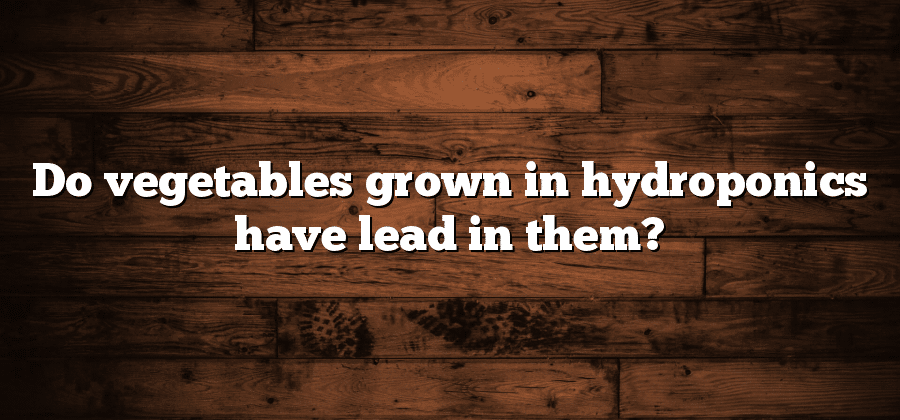Understanding Hydroponic Vegetable Production
Hydroponic vegetable production refers to the cultivation of vegetables in water-based nutrient solutions, without the use of soil. This innovative farming method has gained popularity in recent years due to its numerous advantages. By providing plants with a controlled environment, hydroponics allows for year-round cultivation, independent of climate and seasonal constraints. Additionally, since plants receive their necessary nutrients directly through the water, there is no dependency on fertile soil, enabling urban farming and making efficient use of limited land resources.
One of the key benefits of hydroponics is that it allows for optimal nutrient uptake by plants. By precisely tailoring the nutrient solution to meet the specific requirements of each crop, growers can ensure that plants receive all the necessary elements for healthy growth, resulting in better yield and quality. Moreover, the closed-system nature of hydroponics minimizes the use of pesticides, herbicides, and fungicides, reducing the environmental footprint and enhancing food safety. As a result, hydroponic vegetables are often regarded as cleaner and safer, free from pesticide residues and soil-borne pathogens that can be found in traditional soil-grown produce.
Examining Potential Contaminants in Hydroponic Vegetables
Hydroponic vegetable production has gained popularity in recent years due to its ability to maximize yields and minimize water usage. However, the potential for contamination in hydroponically grown vegetables has raised concerns among consumers and researchers alike.
One of the main sources of potential contamination in hydroponic systems is the nutrient solution itself. The nutrient solution, which provides essential minerals and nutrients to the plants, must be carefully monitored to ensure that it is free from contaminants such as heavy metals, pesticides, and microorganisms. Contamination in the nutrient solution can have long-term effects on the plants, potentially leading to reduced yields and compromised food safety.
Another potential source of contamination in hydroponic vegetables is the water used in the system. Water from various sources, including municipal supplies, wells, and rivers, can contain pollutants such as pesticides, fertilizers, and pathogens. It is crucial for hydroponic farmers to employ proper filtration and treatment methods to ensure that the water used in their systems is clean and free from contaminants that could potentially affect the safety of the vegetables.
Sources of Lead Contamination in Agricultural Systems
Lead contamination in agricultural systems can arise from various sources, posing a significant risk to crop production and food safety. One of the primary sources of lead contamination is the use of lead-based pesticides and fertilizers in the past. Due to their widespread use in the past century, these products have contributed to the accumulation of lead in agricultural soils. Additionally, lead contamination can occur through the use of contaminated irrigation water or from industrial activities near agricultural areas. These sources can introduce lead particles or compounds into the soil, which can then be taken up by plants and accumulate in their edible parts.
Another potential source of lead contamination in agricultural systems is through the deposition of atmospheric lead. Industrial emissions, such as those from smelting operations or lead-acid battery recycling plants, can release lead particles into the air. These particles can be transported over long distances and settle onto agricultural fields, contaminating the soil. As a result, crops grown in these contaminated areas may absorb lead from the soil, leading to elevated levels of lead in their edible portions.
Understanding the sources of lead contamination in agricultural systems is crucial for developing effective strategies to mitigate the risk of lead exposure through food consumption. By identifying and addressing these sources, farmers and policymakers can take proactive measures to minimize lead contamination in crops and ensure the production of safe and healthy food for consumers.
Analyzing the Risk of Lead in Hydroponic Vegetables
Lead contamination in hydroponic vegetable production is a growing concern among consumers and researchers alike. As hydroponic systems rely on water and nutrient solutions to grow plants without soil, the potential for contaminants such as lead to enter the system becomes a significant risk. Given the increasing popularity of hydroponics as a sustainable farming method, it is crucial to understand the sources of lead contamination and the associated risks posed to consumers.
One of the primary sources of lead contamination in hydroponic vegetables is the water used in the system. If the water source contains lead, it can be absorbed by the plants and subsequently consumed by humans. Another potential source of lead is the nutrient solutions that are added to the hydroponic system. These solutions can be derived from various sources, such as man-made minerals or organic matter, which may inadvertently contain lead or come into contact with contaminants during the manufacturing process. Understanding the levels of lead in these solutions is essential in assessing the overall risk of contamination in hydroponic vegetables.
Comparing Lead Levels in Hydroponic and Soil-Grown Vegetables
Hydroponic vegetable production has gained significant attention in recent years due to its potential to offer a more sustainable and efficient method of cultivation. One aspect of concern, however, revolves around the potential for lead contamination in hydroponically grown vegetables. Lead is a toxic heavy metal that can have detrimental effects on human health when ingested. As a result, it is crucial to compare lead levels in hydroponic vegetables with those grown in traditional soil systems to assess any potential risks involved.
Studies have been conducted to analyze the lead levels in hydroponic and soil-grown vegetables, aiming to provide a comprehensive understanding of the similarities and differences between the two cultivation methods. Results from these studies have shown varying outcomes, with some indicating higher lead levels in soil-grown vegetables, while others suggest comparable levels between the two systems. This discrepancy may be attributed to several factors, including variations in environmental conditions, cultivation practices, and the initial lead content in the substrate used for hydroponics. To reach a clearer conclusion, further research is needed to determine the specific factors influencing lead accumulation in hydroponic and soil-grown vegetables and to establish any potential health risks associated with consuming produce from both systems.






